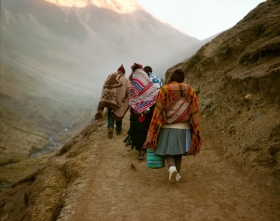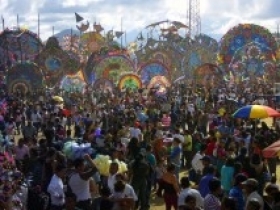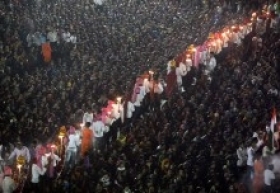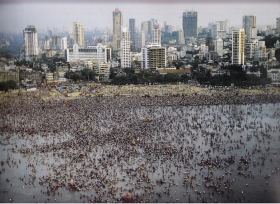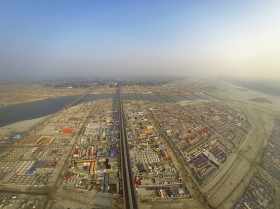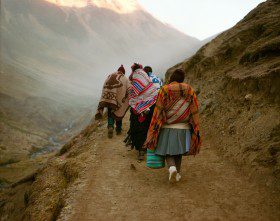 The Research Project on the Ephemeral City, led by Rahul Mehrotra, Professor of Urban Planning and Design and Chair of the Department of Urban Planning and Design, GSD, and SAI Steering Committee Member, has been engaged in documenting and systematically compiling different forms of temporary urbanism in South Asia, Latin America and worldwide.
The Research Project on the Ephemeral City, led by Rahul Mehrotra, Professor of Urban Planning and Design and Chair of the Department of Urban Planning and Design, GSD, and SAI Steering Committee Member, has been engaged in documenting and systematically compiling different forms of temporary urbanism in South Asia, Latin America and worldwide.
The exhibition, which will be on display at Harvard from February 9 to July 15, 2015, focuses primarily on religion, one of the seven taxonomies identified for the ephemeral city.
It presents ten cases of temporary occupation of urban space for religious events and celebration that demonstrate powerful ways in which the public realm is appropriated temporally to create sacred spaces.
On Wednesday, April 22, SAI and the David Rockefeller Center for Latin American Studies will host an opening reception and panel discussion on the project, ‘The Ephemeral City: Looking at Temporary Landscape of Religion in South Asia and Latin America.’
Rahul Mehrotra will give a personal tour of the exhibition at 5:30, followed by a panel discussion at 6:30pm. Exhibition curators include Felipe Vera, Universidad Adolfo Ibañez, Chile, and Jose Mayoral, GSD.
SAI spoke to Mehrotra recently about the research project, and the commonalities between South Asia and Latin America:
SAI: What did you find were some of the commonalities between religious temporary landscapes in Latin America and South Asia? Why were these 2 regions chosen?
Rahul Mehrotra: These regions were chosen for two main reasons. Firstly because we felt that creating a dialogue between two incredibly important regions in the global south was critical. More so because little conversation occurs between these regions.
We also believe there is a lot they can learn from each other as they both share a colonial past, sense of time, and straddle the zones around the tropics. They share many commonalties in the way religion is so central to the way societies in these parts of the world are structured.
The more practical reason these regions were chosen was simply because we had two centers at the University that wanted to support this work and also collaborate.
SAI: What was the most surprising or interesting thing you discovered?
RM: What was interesting was the relationship we saw between these landscapes of religion and the geography and natural terrain of a place as well as their spatial occupation of urban situations. What was also fascinating was the scale of these congregations – many hundreds of thousands of people coming together and orchestrating the making of a temporary landscape.
And of course to discover how many cases of such religious temporary landscapes exited around the world was really a surprise, and we keep discovering more.
SAI: What other urban regions of the world do you hope to explore with this research project?
RM: Several regions will be considered for the broader research project. We will structure the project through a taxonomy of Ephemeral landscapes – such as those of religion, celebration, refuge, transaction etc. This will necessitate us looking at many regions across the world where these taxonomies play themselves out in extreme forms.
The event The Ephemeral City: Looking at Temporary Landscape of Religion in South Asia and Latin America will now take place on April 22 at 6pm.

